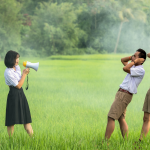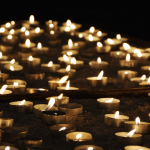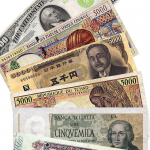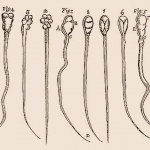The COVID crisis, the unrelenting, omnipresent dilemma battering America and altering our daily lives, has commanded our attention like no other health and science issue we've ever seen. But what about other issues, like those involving the effectiveness of ordinary chemicals used around the house ... or highly-dangerous ones that would-be criminals seek to acquire to carry out their premeditated homicides? Yes, our scientific experts are weighing in on those, too, as demonstrated by the varied media coverage ACSH recently received. So from Missouri to Manila, some of the places we appeared in August.
Other Science News
On tap this time around: Is natural always best, or even better? ... Channeling Rod Serling on digital clutter ... "Slow down, you move too fast" ... How do penguins survive the winter? ... And, can food coloring help against COVID-19?
September marks the 175th anniversary of Scientific American, one of the magazines from a memorable era in journalism that included Life as well as Time – periodicals longer than 20 pages. In honor of SA's anniversary, the editors devoted an article to the words used in articles since the founding of the magazine back in 1845.
Here's this week's menu of ideas: We are all stressed at times, especially now. Can mitochondria hold a key? ... How exactly did police wind up issuing traffic citations in the first place? ... What could bring foodies and "factory farmers of meat" together in alliance? ... And, lastly, a consideration of the "hard problem."
In addition to the multiple rhythms that underlie our individual lives, when we come together we tend to "synch" with one another. Whether it be as simple as adjusting the pace of our walking; the give-and-take of our conversation; or as seemingly sophisticated as the murmuration of starlings, it is a biologic phenomenon. How do we entrain, tie together, our independent rhythms?
Our body hosts many rhythms. While they are downplayed by Western medicine, Eastern medicine utilizes them as tools. A serendipitous observation by researchers links the breathing during mantras with that of prayer.
Here's the lineup: Our immune system has lots of moving parts and they do not always make sense, at least on the first read. ... While the truth may set you free, learning the truth is often hampered by paywalls. ... And a beautiful interactive on a woodblock print that shows: (1) How a picture is worth a thousand words and (2) How culturally interconnected we have been for a lot longer than the past few years.
A meme posted by "Patriotic Millionaires" on Facebook claims that the federal minimum wage of $7.25 in 2009 is worth $6.11 in today's dollars. That is mathematically incorrect and economically illiterate.
Here's what we have for you this time around: Can you really separate mental health calls from police work? ... Nature is the master of scaling, so why would she choose stability over efficiency? ... And, an introduction to a non-conforming economist with Marxist roots and a conservative vibe.
Anton van Leeuwenhoek is often credited with designing the earliest of microscopes. With literally a new view of the world, he examined many objects including human sperm described, as you will remember from high school health, as having a "tail, which, when swimming, lashes with a snakelike movement, like eels in water." Turns out he wasn't thinking in all three dimensions.
How does GrubHub continue to grow despite losing money every quarter? Birds are not are the only air travelers, high altitude mass transit is used by insects, and dare I say bacteria and viruses. Finally, McDonald's gets a lot of coverage about the harms of fast food and low paying jobs, but as always, there is a back story that portrays a corporation that embraced corporate social responsibility before it was a business term.
23andMe brings its special skill set of analyzing genetic ancestry to the history of transatlantic slavery, the Middle Passage. While there are few surprises, it does make a convincing case that our genes and culture are deeply intertwined.











